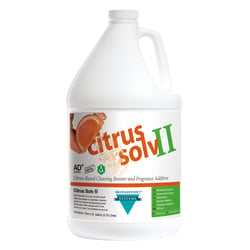Actually, these residues are not soap but are surfactants. Soap is a common generic term and products used to correct extensive surfactant deposits are called soap-free products. The problem originated with coconut-based surfactants from the 1970s which were difficult to rinse out of the carpet. Consumers commonly waited to clean new carpets recognizing that cleaning would become a frequent event. Businesses and franchises were built to take care of these soil-attracting remains. Surfactants were developed over time without these issues. However, consumer rental extraction equipment often resulted in excessive sediments from inadequate equipment and poor cleaning processes. Commercial carpets were cleaned rapidly without the proper procedures based on the need to make a profit from the low prices demanded from commercial management outfits. In short, the original problem from the “soap” has continued to occur from improper processes.
Today a few questions will lead you to the possibility of substantial remnants. You need to inquire if the homeowner periodically cleans their carpet themselves which makes the issue likely. At a commercial building, you need to ask if in-house janitorial staff clean their carpets or other carpet cleaners. Some understanding of the process and any focus on price will also lead you to consider the probability of issues. A simple test will alert you to the presence of excessive “soap” If you add some water to various areas of a carpet, agitate with a bone scraper or brush, resulting in foam when there are extreme residues. You will want to do it in different places to determine if it is a localized issue or is all over the carpet..jpg?width=600&name=My%20Post%20Copy%20(13).jpg) Three primary types of ingredients in a cleaning formulation are builders, surfactants, and solvents. Soap-free products generally only have builders with phosphate being the best raw material for this system. The beauty of soap-free products is that they activate surfactant residues, use the residues to clean the carpet, and remove them during extraction. The soap-free products produce no foam and should be a go-to pre-spray and rinse when there are a lot of “soap” sediments.
Three primary types of ingredients in a cleaning formulation are builders, surfactants, and solvents. Soap-free products generally only have builders with phosphate being the best raw material for this system. The beauty of soap-free products is that they activate surfactant residues, use the residues to clean the carpet, and remove them during extraction. The soap-free products produce no foam and should be a go-to pre-spray and rinse when there are a lot of “soap” sediments.
The downside of soap-free cleaners is that over time the deposits are removed and you miss the cleaning that they provide especially degreasing. Once you have cleaned the same carpet several times you will have diminishing returns when only the alkaline builders are available for cleaning as the surfactant residues decrease. Some like to add a citrus booster to a soap-free product to assist in degreasing at this point in the cleaning cycle.
The surface tension of soap-free products and water is around 70 dynes/cm. Most fibers have a surface energy of around 40 dynes/cm. Oils are at around 25 dynes/cm explaining why soap-free cleaners and water does not work very well. Surfactant residues when activated by soap-free ingredients reduce the surface tension to around 15 dynes/cm. The reduction of the surface tension allows the fibers to be properly cleaned (wetted). One benefit of not properly wetting the fiber is the limitation of wicking as it is more of a surface cleaning. This phenomenon has made soap-free products a system by themselves when the carpet cleaner has a clientele that regularly cleans mildly soiled carpets.
In short, this soap-free system can be extremely effective whenever residues are present and whenever lightly soiled carpets are encountered. It fails when the soiled carpet is encountered with no soap sediments.
by Scott Warrington
Featured Products

Bridgepoint Systems, Cleaning Booster, Citrus Solv II, 1 Gallon
